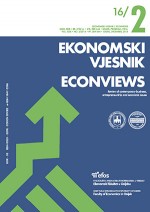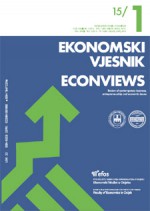Author(s): Akvilė Čibinskienė,Jūratė Pridotkienė / Language(s): Lithuanian
Issue: 1/2011
Every country, as an economic-social system, consists of subsystems, i.e. regions. The fact is that economy of the whole country is directly dependent on an economic and social viability of regions and their ability to be competitive. If factors of competitiveness are not completely used, the region will lose its competitive position among others and will make a negative influence upon national competitiveness. Aiming at the avoidance of these consequences, the present competitiveness of a region should be measured and factors of complex competitive advantage should be differentiated. Recently, more attention is paid to cross-border cooperation and business development. It is defined, that the cross-border region is a territorial unit consisting of two or more adjacent territories of different countries. Cross border regions of small countries often can be characterized by low competitiveness, because most of business concentrates in the largest cities. In order to implement business development strategies in the cross-border region, it is necessary to assess the firm competitiveness of the crossborder region. It is necessary to distinguish the specific features of firm competitiveness assessment in the crossborder region. For the assessment of the firm competitiveness, the system of indicators or synthesis rates can be used. Theoretically the well-chosen system of quantitative and qualitative indicators may well describe the strategic and financial position, its competitive strength. Competitiveness can be examined at various levels, i.e. according to business activity (industry) or territory (region, country). The crossborder region in respect of this evaluation is a separate territorial unit and we can assess the firm competitiveness in this region. However, the specificity of the cross-border region is the fact that this region comprises two distinct areas of neighbouring countries and the assessment of the firm competitiveness in this region gives rise to a specificity that in the scientific literature has not yet been widely explored. The object of the research. Firm competitiveness indicators in the cross-border region. The aim of the research. To distinguish the specific features of the firm competitiveness evaluation in the crossborder region after the theoretical analysis of the crossborder region and firm competitiveness indicators. The tasks of the research: 1. To define the notion and specifics of the crossborder region; 2. To explore the features of firm competitiveness; 3. To distinguish the firm competitiveness indicators; 4. To identify the features of firm competitiveness evaluation in cross-border region. The cross- border region is defined as a territorial unit consisting of two or more neighbouring countries, territories, and it describes the specificity of it in a state regional context. The firm competitiveness include the various aspects of the firm activities, both in local and in foreign markets, it is associated with the company’s a competitive advantage and changes over time. For the assessment of the firm competitiveness, the system of indicators or synthesis rates can be used. Firm competitiveness indicators are grouped into foreign trade, market share, financial, productivity, marketing and development indicators. For the assessment of firm competitiveness the following indicators were identified: productivity, labour force quality, number of employees, employee income, the GDP of value added per employee, the direct foreign investments, capital investment, market share, sales growth, profit growth, gross margin, productivity growth export index, index of new products, innovation and information technology. They not only demonstrate a company's existing competitive advantage, but also its future development potential. For the evaluation of firm competitiveness in the crossborder region the indicators should be calculated separately by country and in general. Thereby the differences between the regional companies in different countries can be assessed.
More...




